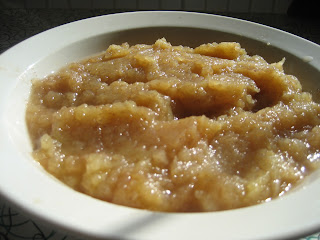 Surprisingly the tomato plants are still producing well into December which is quite unusual (and they're Early Girls!). Yesterday, I harvested about a dozen tomatoes. Most went into a batch of veggie broth. With the rest, we had a backyard salad with dinner--one that might be typical in the summer months but not the middle of December. Lettuce, chopped tomatoes, and a sprinkling of toasted slivered almonds.
Surprisingly the tomato plants are still producing well into December which is quite unusual (and they're Early Girls!). Yesterday, I harvested about a dozen tomatoes. Most went into a batch of veggie broth. With the rest, we had a backyard salad with dinner--one that might be typical in the summer months but not the middle of December. Lettuce, chopped tomatoes, and a sprinkling of toasted slivered almonds.I dressed the salad with some Penzey's Green Goddess dressing that I have had sitting in the pantry for awhile. I decided to give it a go and the results were not bad. I'd make it from scratch for company. But for a weeknight meal it's a nice change of pace. The recipe on the bottle needs some tweaking. It calls for 1 tablespoon of seasoning and I'd go with two. I thought they were too heavy on the mayo as well. I used about 7-8 tablespoons. The one tablespoon of vinegar might be better if it was lemon or lime juice.
Back in the garden, that cute little strawberry plant I had in a pot long ago had quietly spread onto the bed just about taken over the entire bed over the last number of months. We did get some tasty berries out of it, but it was getting too voracious so I pulled it all up. But I think I may be battling it again in the spring.
The peach tree got its first of three dormant sprayings to prevent peach leaf curl. Trying to be better about following my own advice. I tried to do a thorough spraying getting every part that I could reach. Another spraying before New Year's and another after the first of the year.
Finally, it was time to put up the barbecue for the season. That meant reseasoning the grills before storing them in the garage.






























